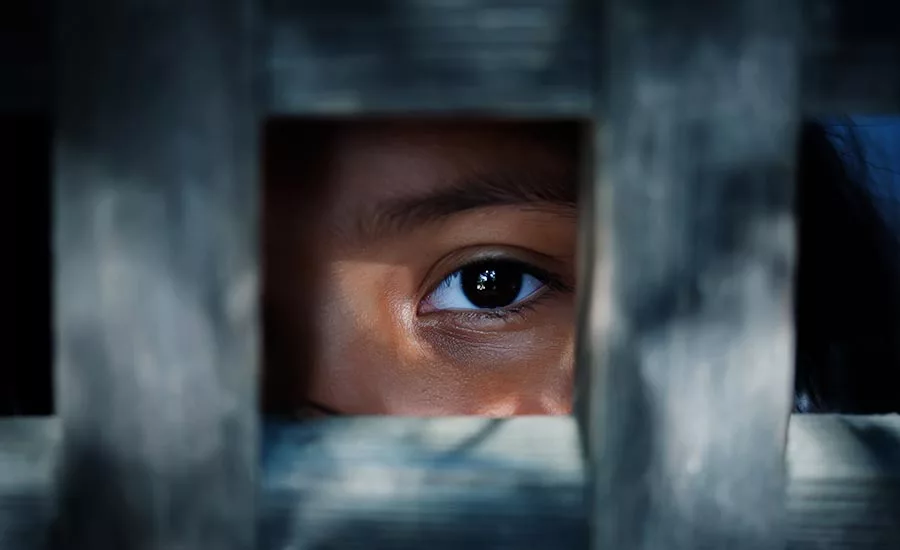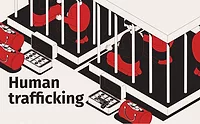Human Trafficking: Recognizing the Signs

Each year, millions of men, women and children are trafficked worldwide. Human trafficking is a multi-billion dollar industry and enslaves about 25 million people every year, according to nonprofit organization Polaris.
Despite that fact, there are many myths and misconceptions around human trafficking.
One major misconception is that the crime doesn’t happen in the United States and that it doesn’t pose a risk to U.S. businesses. A 2018 Polaris study found that more than 81 percent of human trafficking cases in the U.S. involved a victim at a hotel. In addition, a study by the International Organization for Migration found that 80 percent of victims who were trafficked internationally crossed through an official border point, meaning the crime is happening at airports and seaports. A 2014 Urban Institute report found that 71 percent of labor trafficking victims arrived in the U.S. via an airport before they were trafficked.
Mar Brettmann, CEO of the non-profit organization Businesses Ending Slavery & Trafficking (BEST), is an expert on the issue of human trafficking. Her non-profit developed Inhospitable to Human Trafficking, a curriculum that is being used in hundreds of hotels across the U.S. Just last year, BEST also developed Ports to Freedom and Flights to Freedom, two anti-trafficking trainings for employees working in the maritime and airline industries.
“We have been connecting with the aviation industry, maritime industry and the hospitality industry about the role that they can play and that their security needs to play in order to prevent this activity from happening in the U.S.,” Brettmann says.
BEST recently partnered with the Port of Seattle, the Asian American Hotel Ownership Association (one of the largest hotel owners association in the world) and many hotels across Washington, California, North Carolina, New York, Texas, Oklahoma and five other U.S. states. The partnership works to combat human trafficking by providing online education and awareness training to empower the industries and their employees to be the difference in mitigating the crime.
Brettmann stresses the fact that the crime has no international boundaries, and can affect any individual of any age, race, gender or nationality, “because the definition of trafficking is the use of force, fraud or coercion to compel a person into prostitution or another form of work. In addition, anytime a minor, under the age of 18, is involved in a commercial sex act, that is considered trafficking under federal law.”
In Brettmann’s experience, most victims often travel by air with their traffickers while they are being exploited. “When I talk with trafficking survivors, most say that their trafficker flew them Las Vegas, to California and to many other places,” she adds.
“That's why it's really important for people who work in security at airports, in the maritime industry, in hotels, or in shopping malls, to know what this crime looks like, and that they know how to interrupt it or prevent it,” Brettmann says.
Red Flags
Recognizing potential red flags and knowing the indicators of human trafficking is a key step in identifying more victims and helping them find the assistance they need. It is important to note that not all indicators will be present in all situations. In addition, the type of trafficking can vary, and it is important to take into account.
According to the National Human Trafficking Hotline:
Common Work and Living Conditions: The individual(s) in question
- Is not free to leave or come and go at will
- Is under 18 and is providing commercial sex acts
- Is in the commercial sex industry and has a pimp / manager
- Is unpaid, paid very little, or paid only through tips
- Works excessively long and/or unusual hours
- Is not allowed breaks or suffers under unusual restrictions at work
- Owes a large debt and is unable to pay it off
- Was recruited through false promises concerning the nature and conditions of his/her work
- High security measures exist in the work and/or living locations (e.g. opaque windows, boarded up windows, bars on windows, barbed wire, security cameras, etc.)
- Is living and working on site
- Experiences verbal or physical abuse by their supervisor
- Is not given proper safety equipment
- Is not paid directly
- Is forced to meet daily quotas
Poor Mental Health or Abnormal Behavior
- Is fearful, anxious, depressed, submissive, tense, or nervous/paranoid
- Exhibits unusually fearful or anxious behavior after bringing up law enforcement or immigration officials
- Shows signs of substance use or addiction
Poor Physical Health
- Shows signs of poor hygiene, malnourishment, and/or fatigue
- Shows signs of physical and/or sexual abuse, physical restraint, confinement, or torture
Lack of Control
- Has few or no personal possessions
- Is frequently monitored
- Is not in control of their own money, financial records, or bank account
- Is not in control of their own identification documents (ID or passport)
- Is not allowed or able to speak for themselves (a third party may insist on being present and/or translating)
Other
- Claims of just visiting and inability to clarify where they are staying/address
- Lack of knowledge of whereabouts and/or do not know what city he/she is in
- Appear to have lost sense of time
- Shares scripted, confusing, or inconsistent stories
- Protects the person who may be hurting them or minimizes abuse
This list is not exhaustive and represents only a selection of possible indicators. The red flags in this list may not be present in all trafficking cases. Each individual indicator should be taken in context, not be considered in isolation, nor should be taken as “proof” that human trafficking is occurring. Additionally, cultural differences should also be considered.
Warning Signs
What does human trafficking look like? Brettmann says there are four major indicators.
Control. Anytime someone is exerting a high level of control over a potential victim, whether that be threatening them, isolating them, holding their travel documentation or their ID, speaking for them, tricking them, lying to them, surveilling them, or making them live in housing that's controlled by the person exerting control.
Distress or injury. Is the potential victim having a high level of distress or fear? Are they injured or look like they have been recently injured? The signs are often similar to those of domestic violence, and can include injuries. The potential victim may not be allowed to make eye contact or communicate with others, or be comfortable with their companions. They can also be malnourished.
Confusion. A potential victim may be confused since they have been tricked about where they are. They may not know where they are going; who their travel companions are; the name of their travel companions; or who they will be with when they go somewhere. The victim may also be confused because they did not receive the pay they were promised.
Sex buying. A big misconception about trafficking is thinking that sex buying is not correlated with sex trafficking, or that buyers have a choice over whether they buy a trafficking victim or not, claims Brettman. “The reality is that sex buying drives demand for sex trafficking victims, and that sex buyers can be prosecuted as sex traffickers if they are buying sex either from a minor or from a person who is being trafficked,” Brettmann adds. Sex buying indicators could look like anybody who is trying to arrange to buy sex with a person and talking or joking about sex buying, accessing websites to buy sex, or soliciting people for sex.
Security’s Role
Enterprise security has a vital role in interrupting and preventing human trafficking. “I cannot overstate that enough,” says Brettman. “Those who work in security are overseeing their employer’s properties or watching over many aspects of the business, so they are very likely to see something or to be called in to respond to a situation.” Security staff must be able to ask the right questions to properly assess the situation. Is this a human trafficking situation, or it is domestic violence?
Here, training security staff on human trafficking is key, Brettman says. Training is available in the form of PowerPoint slides, she notes, but a PowerPoint may not be as effective as other types, such as video-based training.
BEST has developed video-based training for airport employees and another for maritime facility employees. The training ensures that those who work at hotels or port facilities have the knowledge and resources to recognize and respond to instances of human trafficking.
BEST’s training includes testimonials from human trafficking survivors and from those who are working in the field, which helps security professionals understand how trauma can impact a victim and their behavior.
According to Brettmann, a potential victim may exhibit a flight-or-fight response that results from prior trauma. “If confronted, the potential victim could fight and resist, try to run away, or could just shut down entirely and not speak. Or maybe they feel so afraid that they cannot respond to basic questions.” This trauma-response may not subside until a person feels safe and calm.”
Enterprise security should approach a potential victim gently, and it is better if they are dressed in plain clothes versus a uniform. Before investigating, security should ensure that basic needs are being met, such as ensuring food and the ability to use a restroom. “Once the victim is in a safe place, security can approach and investigate. Ask: are they okay? What do you need? Do you need help? Is there anything that I can do to assist you?” Brettmann suggests.
The National Human Trafficking Hotline is a great resource, as well, notes Brettmann. “If security is looking for resources, the hotline can help anyone who calls to navigate how to appropriately respond. The hotline has translation services available, too.”
Organization-Wide Policy
Another important factor to mitigate human trafficking is to implement an enterprise-wide policy. “Make it very clear that the company does not stand for human trafficking, and that includes sex buying,” Brettmann says. “We’re seeing that buyers are driving the demand for sex trafficking victims. If there were no buyers, there would be no business. A lot of buyers are coming from reputable businesses that tend to be from industries that are more male dominated,” she says.
In addition, Brettmann notes, “Another important reason to put a policy in place is because the federal government has rules in place that require companies to take action on this issue, and to report to the government if they have people who are engaged in sex buying.”
Looking for a reprint of this article?
From high-res PDFs to custom plaques, order your copy today!






